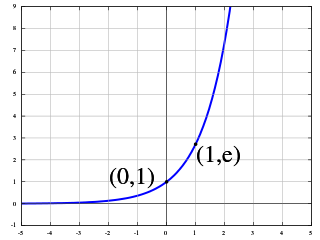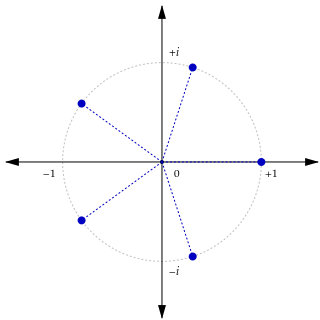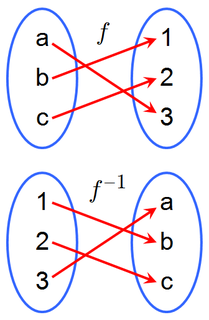
Euler's formula, named after Leonhard Euler, is a mathematical formula in complex analysis that establishes the fundamental relationship between the trigonometric functions and the complex exponential function. Euler's formula states that for any real number x:

The number e is a mathematical constant that is the base of the natural logarithm: the unique number whose natural logarithm is equal to one. It is approximately equal to 2.71828, and is the limit of (1 + 1/n)n as n approaches infinity, an expression that arises in the study of compound interest. It can also be calculated as the sum of the infinite series

In mathematics, an exponential function is a function of the form

Elementary algebra encompasses some of the basic concepts of algebra, one of the main branches of mathematics. It is typically taught to secondary school students and builds on their understanding of arithmetic. Whereas arithmetic deals with specified numbers, algebra introduces quantities without fixed values, known as variables. This use of variables entails a use of algebraic notation and an understanding of the general rules of the operators introduced in arithmetic. Unlike abstract algebra, elementary algebra is not concerned with algebraic structures outside the realm of real and complex numbers.

In mathematics, Euler's identity is the equality

In mathematics, a root of unity, occasionally called a de Moivre number, is any complex number that gives 1 when raised to some positive integer power n. Roots of unity are used in many branches of mathematics, and are especially important in number theory, the theory of group characters, and the discrete Fourier transform.
In the mathematics of the real numbers, the logarithm logba is a number x such that bx = a, for given numbers a and b. Analogously, in any group G, powers bk can be defined for all integers k, and the discrete logarithm logba is an integer k such that bk = a. In number theory, the more commonly used term is index: we can write x = indra for rx ≡ a if r is a primitive root of m and gcd(a,m)=1.
A transcendental function is an analytic function that does not satisfy a polynomial equation, in contrast to an algebraic function. In other words, a transcendental function "transcends" algebra in that it cannot be expressed in terms of a finite sequence of the algebraic operations of addition, multiplication, and root extraction.

In mathematics an identity is an equality relation A = B, such that A and B contain some variables and A and B produce the same value as each other regardless of what values (usually numbers) are substituted for the variables. In other words, A = B is an identity if A and B define the same functions. This means that an identity is an equality between functions that are differently defined. For example, (a + b)2 = a2 + 2ab + b2 and cos2(x) + sin2(x) = 1 are identities. Identities are sometimes indicated by the triple bar symbol ≡ instead of =, the equals sign.

In mathematics, tetration is iterated, or repeated, exponentiation. It is the next hyperoperation after exponentiation, but before pentation. The word was coined by Reuben Louis Goodstein from tetra- (four) and iteration. Tetration is used for the notation of very large numbers. The notation means , which is the application of exponentiation times.
In mathematics, a closed-form expression is a mathematical expression that can be evaluated in a finite number of operations. It may contain constants, variables, certain "well-known" operations, and functions, but usually no limit. The set of operations and functions admitted in a closed-form expression may vary with author and context.
In mathematics education, precalculus is a course that includes algebra and trigonometry at a level which is designed to prepare students for the study of calculus. Schools often distinguish between algebra and trigonometry as two separate parts of the coursework.

Elementary mathematics consists of mathematics topics frequently taught at the primary or secondary school levels.
Many letters of the Latin alphabet, both capital and small, are used in mathematics, science and engineering to denote by convention specific or abstracted constants, variables of a certain type, units, multipliers, physical entities. Certain letters, when combined with special formatting, take on special meaning.
In mathematics, an algebraic expression is an expression built up from integer constants, variables, and the algebraic operations. For example, 3x2 − 2xy + c is an algebraic expression. Since taking the square root is the same as raising to the power 1/2,


























